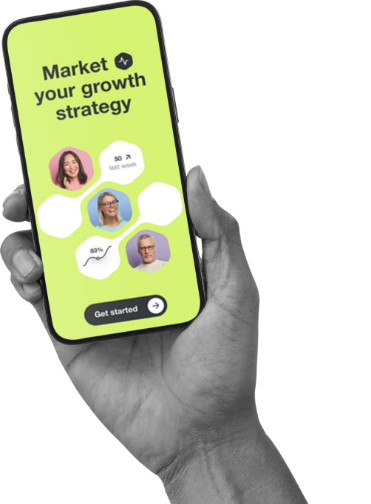It is a technology that you wear on your body parts or clothing, connected to the internet through smartphones, computers and tablets. Wearables Apps have access to the device’s hardware, which includes sensors, receivers, and other components. They gather data from hardware and, with the help of the network to which they are connected. Then they use it further to generate the outcome they want. The output is usually provided or shown by the device itself.
Lately, there have been problems involving data leaks, such as the fact that Fitbit is open to takeover by other parties while connected to an internet or Bluetooth and that the network address is public. Data leaks happened with manufacturers including Xiaomi, Huawei, Jawbone, and others. Due to privacy violations that restrict the growth of their products, some of these wearable app devices have been forced to leave the market. In addition to technical factors like devices, networks, data transfer, and privacy awareness, another key factor influencing the data security and privacy protection of healthcare wearable devices is privacy awareness. Also, wearable technology can gather user information at all times, places and no matter what the circumstance is and then upload that information to the cloud, making it subject to attacks. and data leakage.
Security Considerations in Wearable Mobile App Development
1- User Authentication and Authorization
The process of verifying the users are who they say they are is known as authentication they are multiple methods to verify it such as:
- Username & passwords
- One time pin
- Biometric
Where as user authorization is the process of giving a user a permission to access a specific file, resource or function.
2- Data Encryption and Protection
There are two methods of data Encryption:
- Symmetric encryption: The sender and the receiver must both have access to the same key in order to use this method, which is also known as private-key cryptography or a secret key algorithm. Therefore, before the message can be encrypted, the recipient must possess the key.
- Asymmetric encryption: This technique, also known as public-key cryptography, encrypts data using two keys a public key and a private key that are mathematically linked. It doesn’t matter which key you chose first; the user uses one for encryption and the other for decryption.
3- Secure Communication and Network Protocols
The safety system for the Internet based on encryption is known as SSL, or Secure Sockets Layer. To provide privacy, authentication, and data integrity in Internet communications, Netscape created it for the first time in 1995. SSL is the predecessor to the modern TLS encryption used today.
Data transferred between applications over the Internet is secured end-to-end using the cryptographic protocol TLS. The padlock icon that appears in web browsers when a secure session is started makes it most familiar to consumers when used in secure web browsing. However, it can and should be used for other applications as well, including voice-over IP, file transfers, video/audio conferencing, instant messaging, and e-mail.
While accessing the internet remotely, many Wi-Fi users choose to use open networks rather than the data plans associated with their devices. However, the safety of free public WiFi is not guaranteed. If you are careless, hackers could easily access your connection and compromise sensitive data that is kept on your device and in online accounts.
Bluetooth connections to your mobile devices can be used to transmit data, connect to wireless headphones, and allow hands-free calling while you’re driving. The majority of the time, a user must approve a Bluetooth connection (also known as “pairing”) before data can be transferred, which offers some level of data protection. But if you’re not careful, Bluetooth connections, like Wi-Fi connections, could put your private information in danger.
4- Secure Code Development
There are key areas to look in for secure coding:
- Input Validation
- Output Encoding
- Authentication and Password Management
- Session Management
- Access Control
- Cryptographic Practices
- Error Handling and Logging
- Data Protection
- Communication Security
- System Configuration
- Database Security
- File Management
- Memory Management
5- Secure App Updates and Patch Management
Regular software updates and patch management are essential for avoiding cyberattacks for several of reasons, one of which is that they repair identified vulnerabilities in software. These weaknesses are frequently used by hackers to enter a company’s systems and take confidential information. Organizations may fix these flaws and make it much harder for hackers to break into their systems by regularly updating and patching their software. Also, they help in making sure a company’s computer systems are running the most recent software. Software developers frequently include new features, modifications, and security updates in new releases of their products.
Also Read: Augmented Reality And Virtual Reality In Wearable Mobile App Development
Privacy Considerations in Wearable Mobile App Development
1- Data Collection and Storage
There are a few best practices that can help users to ensure accurate and reliable data:
- Check for Accuracy and Completeness
- Use Multiple Sources
- Keep a Record of Your Sources
- Store Data Securely
The documentation is the supporting material that offers the details required to read, comprehend, recognize, and reuse data. Always have a backup strategy in place, including where and when your data will be stored there. Have multiple copies of your data on the cloud, drive and on file.
2- User Privacy Controls
Users can manage who can access their content through privacy controls. These options can be straightforward toggling between making an account public and restricted to a certain group or complex, giving users control over who can see each individual message. users should utilize privacy measures, especially when sharing sensitive personal information, many users are unaware of how public their data is or how to use all the protections available to them.
3- Data Deletion and Retention Policies
The data retention policy of an organization governs how data is stored for compliance or regulatory purposes as well as how it is disposed of after it is no longer needed. Even a straightforward data retention policy should specify the format, duration, and type of storage system or devices to be utilized for records and data.
Rapid data transfers between platforms have been made easier by cloud computing, but there is also a risk of data loss owing to external reasons like a major breakdown of the physical infrastructure or intentional or unintentional data deletion.
Also Read: Role Of Artificial Intelligence In Wearable Mobile App Development
4- Third-Party Integrations and Data Sharing
Third-party integration is the process of adding relevant external data via various APIs to an already-existing project. The use of existing components rather than writing new component code from scratch allows developers to create new solutions more quickly by utilizing third-party APIs.
Any company, sharing data with third parties can have a number of advantages, including enhancing analytics and enabling innovation. However, there are also major risks associated with it, including legal obligations, privacy violations, and data breaches.
Conclusion:
Prioritizing security and privacy concerns in the creation of wearable mobile apps is crucial as wearable technology develops and becomes more ingrained in our daily lives. Developers may guarantee that user data is safeguarded and consumers can have a safe and secure experience with their wearable devices by installing strong security mechanisms, adopting a privacy-by-design approach, and doing exhaustive testing and auditing.
For developers to keep on top of the most recent security risks and privacy laws in the rapidly changing world of wearable technology. Developers may foster user confidence, safeguard sensitive personal data, and contribute to the continuous growth of wearable technology in a secure and responsible way by proactively addressing security and privacy concerns.







